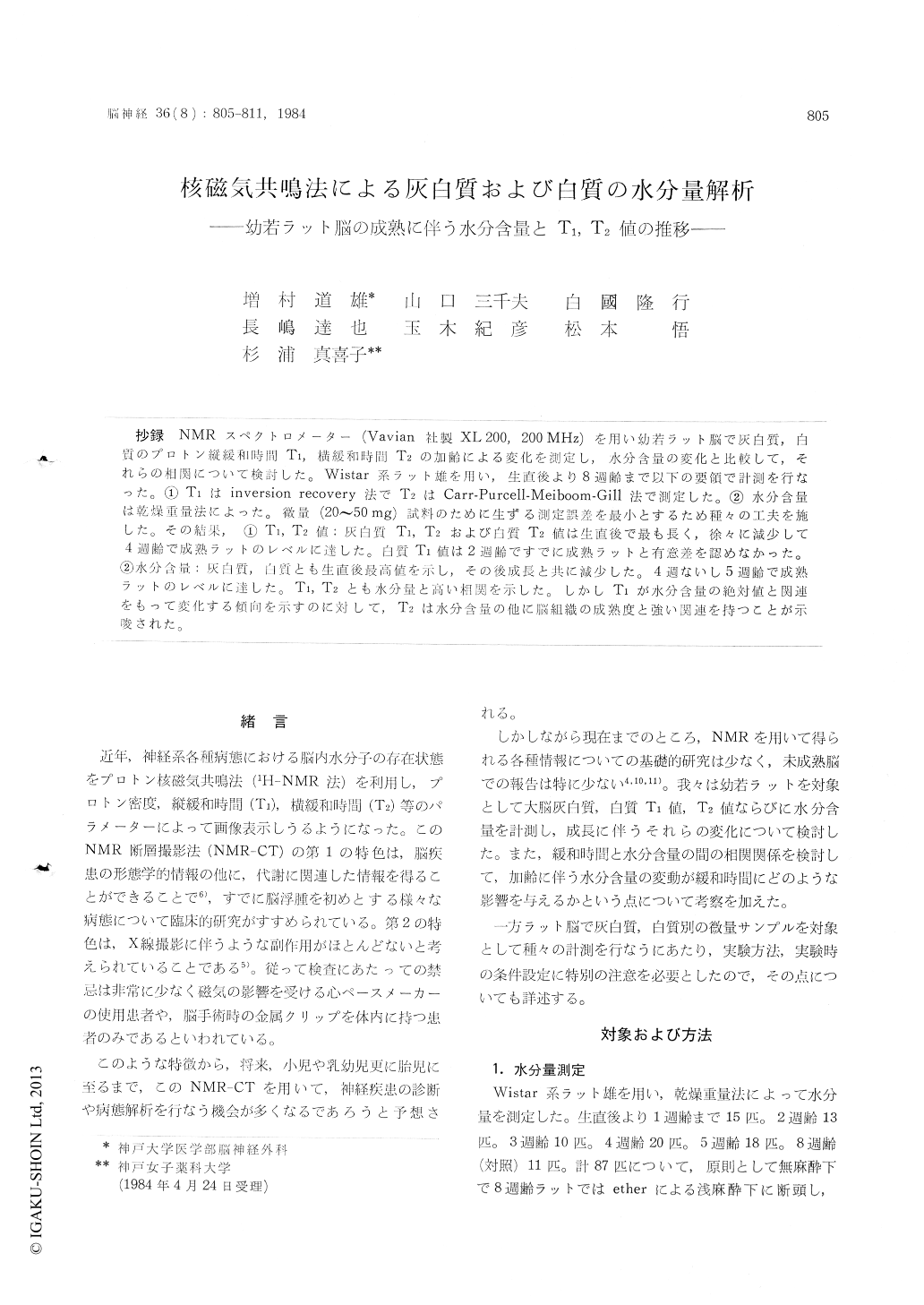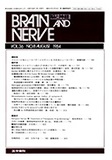Japanese
English
- 有料閲覧
- Abstract 文献概要
- 1ページ目 Look Inside
抄録 NMRスペクトロメーター(Vavian社製XL200,200MHz)を用い幼若ラット脳で灰白質,白質のプロトン縦緩時間T1,横緩和時間T2の加齢による変化を測定し,水分含量の変化と比較して,それらの相関について検討した。Wistar系ラット雄を用い,生直後より8週齢まで以下の要領で計測を行なった。①T1はinversion recovery法でT2はCarr-Purcell-Meiboom-Gill法で測定した。②水分含量は乾燥重要法によった。微量(20〜50mg)試料のために生ずる測定誤差を最小とするため種々の工夫を施した。その結果,①T1,T2値:灰白質T1,T2bbおよび白質T2値は生値後で最も長く,徐々に減少して4週齢で成熟ラットのレベルに達した。白質T1値は2週齢ですでに成熟ラットと有意差を認めなかった。②水分含量:灰白質,白質とも生直後最高値を示し,その後成長と共に減少した。4週ないし5週齢で成熟ラットのレベルに達した。T1,T2とも水分量と高い相関を示した。しかしT1が水分含量の絶対値と関連をもって変化する傾向を示すのに対して,T2は水分含量の他に脳組織の成熟度と強い関連を持つことが示唆された。
Using rat brains, the maturational change on the water contents and on the proton NMR signals were studied in this laboratory. Water contents, the proton longitudinal relaxation time (T1) and the transverse relaxation time (T2) were measured on the samples from gray and white matters, separately.
A constant decrease of these parameter values was observed in relation to the development of the brain. Water content of 1 week-old rat was 88.393±1.19% in the gray matter (G) and 88.63 ±1.96% in the white matter (W). These values decreased gradually and reached adult rat levelwhen the animals became 5 weeks old : 81.47± 1.67% in G and 79.45±2.39% in W. No marked change on the brain water content was observed thereafter, T1 values of immature (one week-old) rat brain were 1.755±0.088 sec in G, and 1.832 ±0.154 sec in W, while T1 values of the adult rat brain were 1.327±0. 043 sec in G, and 1.297 ±0.039 sec in W, respectively. A marked dif-ference was observed on the values of T1 between the immature and the adult rats. T2 value of the 1 week-old rat brain was 101.05±-10.20 msec in G, and 102.75±8.10 msec in W, respectively. T2 of the mature rat brain was 56.90+2.61 msec in G, and 54.52±2.35 msec in W, respectively. A statistically significant correlation was proved between the water content and the proton relaxa-tion time (either T1 and T2).
Although T1 and T2 reduced by aging simulta-neously, we suspect that there should be some different factors influencing the length of the rela-xation time.T1 tends to change by the effect of absolute accumulation of water in the tissue (over 82%). On the otherhand, T2 decreases gradually in a similar fashion both in G and W, even though the water contents in both tissues are different each other to some extent. Some conformational and physiochemical alteration might change the T2 value in addition to the effect simple water content in tissue. Concerning to the relaxation time value on the experimental brain edema, there have appeared several papers in which fast and slow components were reported on the measure-ment of T2. However, only one value has been obtainable as T2 in our experiment.
The knowledge of maturational change of T1 and T2 in the brain will give an important infor-mation when infant and children are examined clinically by NMR imaging system in the future.

Copyright © 1984, Igaku-Shoin Ltd. All rights reserved.


